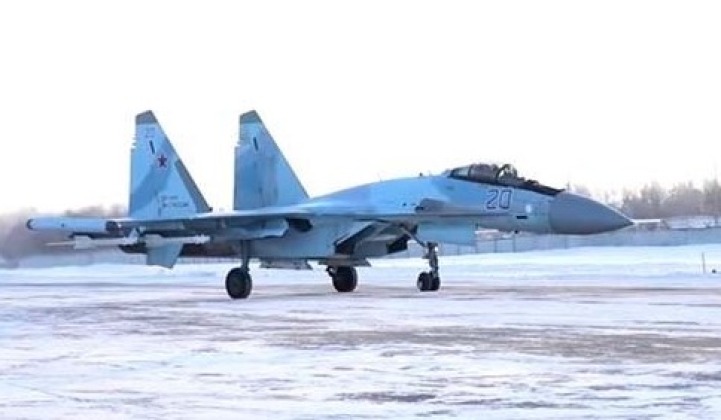News
Hypersonic Missiles in Belarus Aimed at NATO Will Integrate Russian Tactical Nuclear Warheads

On March 25 Russian President Vladimir Putin announced that tactical nuclear weapons would be deployed to the territory of neighbouring Belarus, while strongly indicating that these would be integrated into the Iskander ballistic missile arsenal stationed in the country. “We have handed over to Belarus our well-known and very effective Iskander system that can carry [nuclear weapons],” he stated, elaborating “on April 3, we will start training the crew and on July 1 we will complete the construction of a special storage for tactical nuclear weapons on the Belarusian territory.” Acknowledging that Belarusian President Alexander Lukashenko “has long raised the question of deploying Russian tactical nuclear weapons on the territory of Belarus,” President Putin also highlighted that the deployments were partly a response to British supplies of depleted uranium munitions to Ukraine.
According to Putin the arrangement with Belarus would mirror the controversial nuclear sharing agreements the United States has with several of its NATO allies, which allow them to train for employment of American nuclear weapons on their territory which they would be given access to in the event of war. Thus nuclear weapons would remain in Russian custody, but Belarusian forces would train to utilise them and receive them in the event of war. As Russia’s only security partner in Europe, Belarus remains the only country in the region with which it can pursue a nuclear sharing agreement. President Putin claimed that 10 Belarusian Air Force aircraft have already been equipped to deliver tactical nuclear weapons, although the Iskander arsenal is expected to be the primary means of delivery.
President Putin indicated as early as June 2022 that Belarus’ fleet of Su-25 close air support aircraft could be modified to carry tactical nuclear weapons, although their suitability for such a role remains questionable. Belarus’ best suited strike aircraft for nuclear delivery the MiG-25BM and Su-24M were respectively scrapped and exported to Sudan. The country does deploy a sizeable arsenal of Tochka tactical ballistic missiles, a shorter ranged predecessor to the Iskander, which may also be equipped for nuclear strikes although this remains unlikely. Alongside Iskanders, an indigenous Belarusian Iskander derivative is reportedly being developed with Russian support. As the most famous post-Cold War tactical ballistic missile system the Iskander, which entered service in 2006, was combat tested against Georgian forces two years later and has been Russia’s most widely acquired nuclear capable anti surface asset since. Capabilities include 500km range, high precision, use of an advanced semi ballistic trajectory, extreme manoeuvrability, and an abnormal hypersonic Mach 5.8-8.7 terminal speed which makes it very difficult to intercept. The system is particularly prized for its asymmetric value as the post-Soviet Russian Military faced an unfavourable conventional balance against NATO, with international security experts A. B. Abrams in October describing its importance as follows: “Facing an increasingly unfavourable balance of power from the 1990s particularly in the air and at sea leading it to invest heavily in a range of asymmetric assets, namely mobile ballistic and cruise missiles, air defence systems and nuclear weapons.”

Belarus and Russia have strengthened military cooperation since late 2020, when both alleged that Western countries were seeking to support the Belarusian government’s overthrow by provoking social unrest, while also imposing economic sanction on Minsk. Amid high tensions with NATO in late 2021, Russia repeatedly flew nuclear capable bombers over Belarus in shows of force to NATO, while President Lukashenko strongly indicated that his country could host Russian nuclear weapons – highlighting that Soviet era infrastructure for such weapons remained intact despite Western pressure in the 1990s to destroy it. Belarus has hosted growing numbers of high end Russian assets since, including S-400 air defence systems and Su-35 fighters which were redeployed there in January 2022, with bases there having significantly bolstered Russia’s position against NATO and benefitted its ability to operate into Ukraine.












